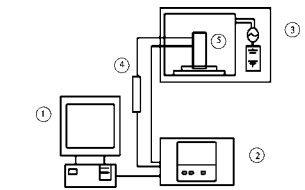Microwave drying process of Momordica charantia based on on-line odor detection

Absrtact: Microwave drying equipment based on odor on-line detection was used to study the effects of drying temperature (50, 65, 80), slice thickness (2 mm, 4 mm, 6 mm) on the microwave drying process of balsam pear. The volatile odor was collected online by surface acoustic wave electronic nose in the process of constant temperature drying. By analyzing the drying characteristics, the curve of peak area and the intensity of odor loss, a better drying scheme was determined based on the quality after drying.
The results showed that there was a certain consistency between the law of odor peak area loss and the law of water distribution in balsam pear; drying temperature had a greater influence on odor loss and drying rate than slice thickness; the smaller the area of odor peak was, the smoother the change was, and the more the slice thickness was, the lower the drying temperature was in the range of 50-80 C. The lower the intensity. Generally speaking, microwave drying temperature 65 C, slice thickness 2 mm, the change of odor peak area is more stable, odor retention is better, drying rate is moderate, and the quality is better after drying.
Key words: balsam pear microwave drying; online odor detection; temperature; slice thickness; odor.
Momordica charantia is known as medicinal vegetable. It is rich in vitamins, minerals, amino acids and other nutrients as well as triterpenes, alkaloids, steroids, terpenoid pigments, encephalosides and other pharmaceutical active ingredients. It has unique flavor and is very popular with consumers. It has very high processing value. Drying treatment is a common deep processing method.
Odor is an important quality detection index. Odor substances are mostly unstable substances. Odor detection can help researchers optimize drying products. Toontom et al. used gas chromatography-mass spectrometry to detect the volatile odor of hot pepper dried by sun, freezing and hot air. It was found that retaining the specific volatile odor was beneficial to increase the sweetness and surface greenness of dry pepper. Fei et al. found that the volatile odor of mushroom samples treated by freezing combined with microwave vacuum drying was similar to that of fresh mushrooms, and the content of active amino acids and flavor substances was higher. Li et al. used surface acoustic wave electronic nose to detect volatile substances online during apple microwave drying. It was found that the method of fuzzy temperature control had better retention of volatile odor.
The change of odor substances in drying process is a complex mass transfer process. Off-line odor detection can not reflect the change of odor in drying process. At present, the common odor detection methods in the market mainly include headspace solid-phase microextraction, gas chromatography-mass spectrometry, nuclear magnetic resonance and electronic nose, etc. The gas chromatography-mass spectrometry method takes a long time, while surface acoustic wave electronic nose detection method has a short and comprehensive cycle, and is suitable for online detection.
In this study, surface acoustic wave electronic nose was used to detect volatile odor substances in Balsam Pear during drying. The odor intensity, drying characteristics and quality of balsam pear after drying were taken as indicators to study the odor changes of Balsam Pear during microwave drying, with a view to providing microwave drying technology for industrial production of high-quality dry products. Reference resources.